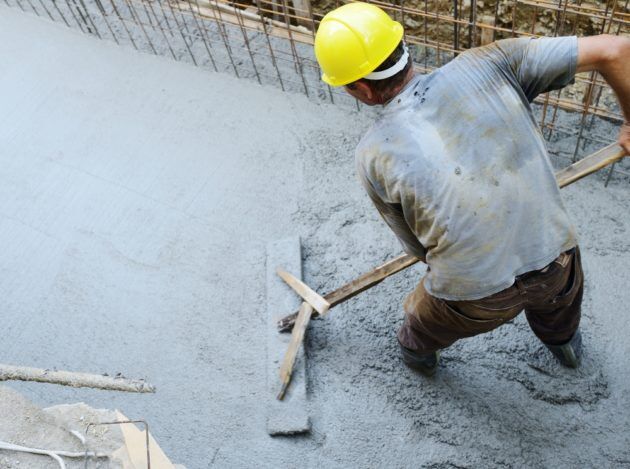Revealing the Eco-Friendly Advantages of Using Recycled Concrete in Sustainable Building Practices
In the realm of lasting building methods, the utilization of recycled concrete stands as a pivotal yet frequently undervalued resource. Beyond its conventional applications, recycled concrete deals a myriad of eco-friendly benefits that prolong far beyond the confines of typical building and construction materials.
Ecological Advantages
By including recycled concrete into building practices, there is a substantial decrease in the need for new raw products, leading to preservation of all-natural resources. Furthermore, the use of recycled concrete lessens the amount of waste being sent out to garbage dumps, therefore decreasing ecological pollution and relieving the pressure on land fill capacities (Concrete).

In contrast, recycled concrete has a lower carbon footprint as it reduces the need for new concrete production. Generally, the ecological advantages of utilizing recycled concrete are considerable and play an essential function in advertising environmentally friendly construction approaches.
Cost-Efficiency
Accomplishing cost-efficiency is a critical consideration when examining the utilization of recycled concrete in building projects. One of the essential benefits of making use of recycled concrete is its cost-effectiveness contrasted to standard concrete.
Moreover, the usage of recycled concrete can lead to financial savings in land fill costs by diverting concrete waste from disposal websites. This not just minimizes the environmental impact however additionally gets rid of the prices related to waste removal. Additionally, the durability and efficiency of recycled concrete approach traditional concrete, ensuring that expense savings do not jeopardize the top quality of the construction.
Resilience and Strength
Considering the considerable cost-efficiency benefits of utilizing recycled concrete, it is necessary to examine its sturdiness and strength in building and construction applications. Recycled concrete deals similar, if not exceptional, durability and strength homes to standard concrete. Through advancements in handling methods and quality control, recycled concrete can fulfill or exceed the performance standards of standard concrete. The process of recycling concrete entails squashing, sorting, and evaluating old concrete to generate accumulations that can be used in brand-new building and construction jobs. These recycled accumulations are qualified of providing adequate compressive strength, resilience, and long-lasting efficiency.

Waste Reduction
Effective waste decrease practices play a critical role in the lasting usage of sources within the construction market. When it comes to making use of recycled concrete, waste reduction is a key benefit that contributes considerably to environmental conservation. Conventional building methods typically generate substantial quantities of waste, particularly in the form of concrete debris from demolition sites. By integrating recycled concrete into building projects, this waste is repurposed and diverted from land fills, decreasing the overall environmental impact of building activities.
Recycled concrete not just aids in lessening the amount of Home Page waste that winds up in land fills however additionally preserves natural deposits by reducing the demand for brand-new aggregate products. This process of waste reduction advertises a round economic situation within the building and construction market, where materials are reused and reused to develop a more sustainable market. Additionally, making use of recycled concrete can lead to cost financial savings for building and construction tasks, as it is frequently extra budget-friendly than sourcing and moving brand-new materials. To conclude, waste reduction with the utilization of recycled concrete is a vital part of lasting building and construction methods that benefits both the building and construction and the setting sector in its entirety.
Energy Conservation
Power preservation is a Recommended Site vital element of lasting building and construction practices, intending to lower the total energy intake connected with structure procedures and materials production. Substantial energy savings are attained compared to typical concrete manufacturing when it comes to making use of recycled concrete in building and construction. The process of creating recycled concrete involves recycling and crushing existing concrete materials, which consumes less power than mining, handling, and moving basic materials for new concrete production. In addition, using recycled concrete can assist reduce the need for virgin aggregate, further decreasing the energy-intensive extraction and handling of natural deposits.
Verdict
Finally, the utilization of recycled concrete in lasting construction practices uses countless ecological benefits, cost-efficiency, longevity, strength, waste decrease, and energy conservation. By integrating recycled concrete right into building projects, we can add to a more eco-friendly and sustainable future. It is important for the construction sector to prioritize using recycled materials to aid lower the ecological influence of building tasks.
One of the vital advantages of using recycled concrete is its cost-effectiveness compared to traditional concrete.In addition, the use of recycled concrete can lead to cost savings in land fill costs by diverting concrete waste from disposal websites. The longevity and efficiency of recycled concrete are similar to standard concrete, ensuring that cost savings do not jeopardize the high quality of the building and construction.

Comments on “Concrete Fixing and Maintenance: Keep Your Frameworks Strong and Durable”